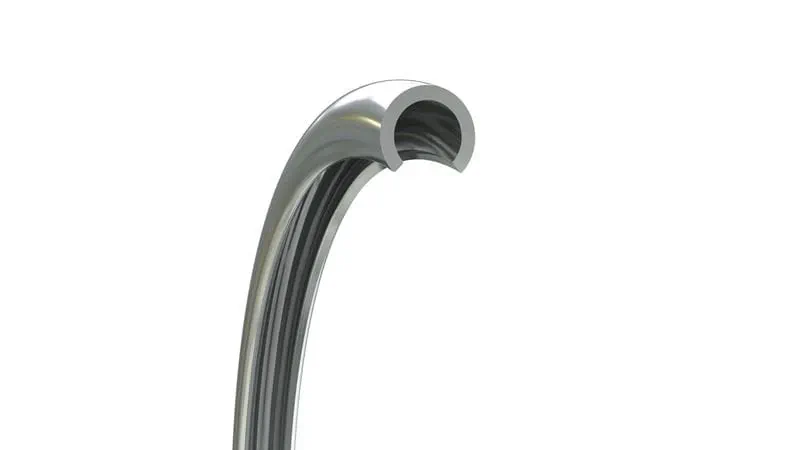News
A2025-06-05

In extreme environments with ultra-high pressure, elevated temperatures, and intense radiation, traditional O-rings or metal gaskets often fail due to plastic deformation or material degradation. Wills Rings® C-Seals (C-Seals) have emerged as the premier sealing solution for aerospace, nuclear power, and supercritical fluid systems through revolutionary elastic mechanical design, advanced materials science, and 50 years of engineering validation. This article explores the structural principles, material innovations, performance boundaries, and industry applications defining this pinnacle of sealing technology.
Core Design Philosophy
The C-Seal’s dual-arched elastic beam structure—featuring a distinctive "C" cross-section—enables triple-sealing contact (line-surface-line). Under pressure, the twin arches generate opposing elastic deformation to achieve self-energized sealing.
Compared to metal O-rings (dependent on plastic deformation) or spiral-wound gaskets (irreversible compression), C-Seals deliver over 95% elastic recovery—requiring 200x less preload than conventional solutions. Critical dimensions like arch height (typically 2.5mm for DN50 seals) and 30° contact angle optimize stress distribution while a 0.3mm free-gap accommodates thermal expansion.
Advanced Materials Engineering
Base materials are engineered for extreme service:
Specialized coatings enhance performance:
Breaking Performance Boundaries
Validated pressure-temperature limits redefine feasibility:
In 1,000 MPa supercritical water cycling tests at 300°C, C-Seals maintained leak rates below 1×10⁻⁶ mbar·L/s for over 100,000 cycles—20x longer lifespan than failing metal O-rings.
Transforming Critical Industries
Nuclear Power: Segmented Inconel 718 C-Seals with Y₂O₃ coating seal reactor vessels (>5m diameter, ≤0.1mm flatness). This extends maintenance cycles from 18 to 30 months, saving $200 million per outage.
Space Systems: Ti-6Al-4V C-Seals with Au/MoS₂ coating secure cryogenic LOX/methane engines (−183°C, 300MPa, >100g vibration), reducing leak rates to <0.01 g/s and mass by 60%.
Energy Systems: Haynes 282 C-Seals with AlCrN coating boost supercritical CO₂ turbine efficiency by 3% while cutting maintenance costs 40% at 650°C/250MPa conditions.
Precision Installation & Smart Monitoring
Critical protocols include:
IoT-enabled sensors detect micro-leakage via 20kHz–1MHz acoustic emissions, while ANSYS-powered digital twins visualize real-time stress distribution for predictive maintenance.
Next-Generation Evolution
Emerging technologies push boundaries further:
Redefining Engineering Possibilities
Wills Rings® C-Seals transform sealing from a maintenance item to an enabling technology—their adaptive megapascal-scale contact stress allows 50% fewer bolts, elimination of heavy sealing grooves, and lifetime maintenance-free operation. From ITER fusion reactors to SpaceX Raptor engines, they don’t just withstand extremes; they expand the boundaries of system design.
[DLSEALS kindly Reminder] Sealing issues? Turn to DLSEALS! As a sealing component manufacturer, we specialize in customizing sealing components, providing a full range of services from design, research and development, production, testing, and more. If you have more information you'd like to know, feel free to contact us directly. DLSEALS's product experts are dedicated to serving you!